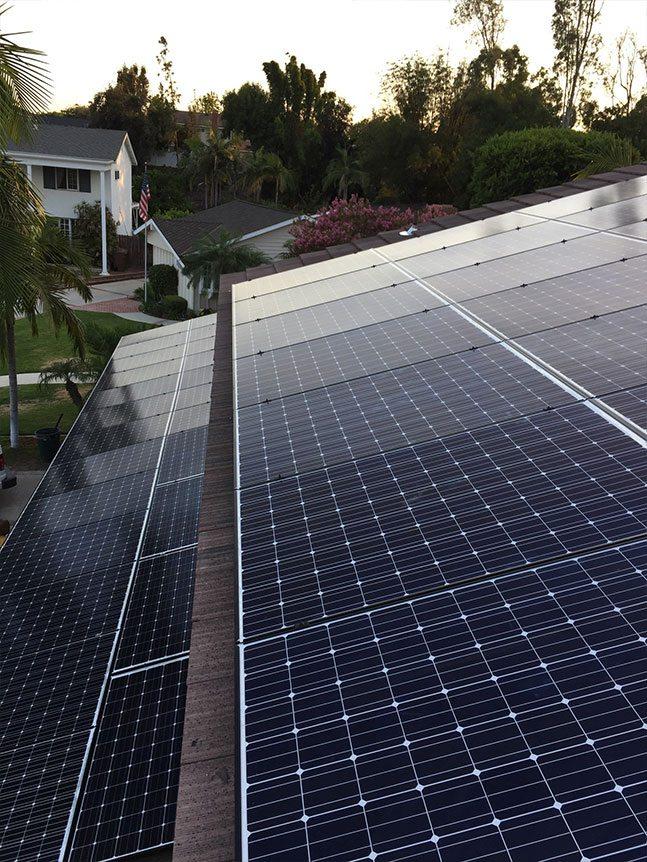If you’re reading this blog, chances are good that you’re seriously considering solar panels for your home or business. That’s great news!
But you’re probably wondering: “Is my property right for solar?”
Fortunately, the answer is pretty simple.
Here are the key factors that make up an ideal home for solar energy:
- A lack of shade
- Roof orientation
- Roofing material and shape
Let’s jump right into how all these variables work together to make a home perfect for solar panels.
Shade is a Solar Killer
Shade is generally a desirable thing to have on your property. It can reduce the need for cooling in the summer, and makes a nice spot for sipping a cold beverage of your choosing after finishing work for the day.
But the ideal place for solar has no shade at all. If your house or business has an unshaded roof or open ground space, you’re golden! If you’re buying a house with solar in mind, look for one with a good, unshaded south-facing roof.
Solar panels can make electricity with just a little bit of light (even on cloudy days!), but if you have a roof that’s even partially shaded, part of the time, it can mean big problems for your solar potential. That’s because shade on even a small portion of a panel affects the output of the whole thing.
Solar Panels and Cells
The little squares you see on a solar panel are individual cells. Those cells are wired together in a row (called “series wiring,”) and electricity flows through wires between them like water flows through pipes. Shade on just one of the cells in a panel is like a clog in a section of a pipe, causing the electrical current to drop to a trickle for that panel, and reducing its ability to put out electricity.
The problem gets even worse if you have multiple panels wired together in a series, connected to a single DC/AC inverter. The whole string of panels can only put out as much energy as the weakest panel in the series.
Fighting Problems With Shade
Having a shady roof doesn’t have to be the end of your solar dreams. There are multiple ways to overcome the challenges of shade. here are the best places to start:
Put Panels on the Ground
If your roof is shady, but you have a shade-free area on your property, you’re set! You can mount solar panels on the ground. Ground-mounted solar panels are installed on galvanized steel structures that can be sunk into the ground with concrete footings, meaning easier maintenance.
If you’d rather not use up valuable ground space, you can install solar on a shed or outbuilding, too. Or build a solar carport, which can benefit you in multiple ways.
Microinverters
There is a way to overcome the problems we described above that occur when one panel is shaded. Microinverters make each panel into its own island, ensuring that each panel puts out as much electricity as it can. When one panel with a microinverter is shaded, its output goes down, but the rest of the system is unaffected.
Microinverters also provide added benefits. Each one can be monitored individually for problems with low output or connectivity, making it easy to see if a panel isn’t living up to its warrantied specifications. This situation is rare, but can be very frustrating without the help of microinverter monitoring.
Tree-trimming
If your roof is only a little shaded for part of the day, tree trimming can be a great solution to your problems. You’ll have to do it every couple of years, and stay vigilant for any stray branches that seek to harsh your solar mellow, but shade on solar panels really is that big of a problem.
Orientation is Key
In the northern hemisphere (where we live here in the U.S.), solar panels should face south.
But if your house doesn’t have a large, unshaded south-facing roof, don’t despair! There’s a reason this is third on our list of important ingredients of a solar home. West-facing panels can also be great, especially if your utility company offers a time-of-use billing option, under which energy is more expensive during late afternoon “peak” times, when more people are using electricity and more sun is shining on west-facing roofs.
Roofing Materials and Shape
The final ingredient in making a property right for solar is the roof itself. Ideally, you’ll have a rectangle-shaped roof (i.e. a gable roof) with standing-seam metal or asphalt shingles on top of it.
Ready for a FREE Quote?
Now that we’ve answered your question about whether your property is right for solar, how about you give us a call for a FREE QUOTE. Make 2019 the year you go solar!
